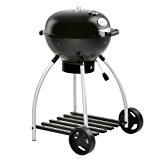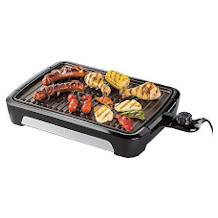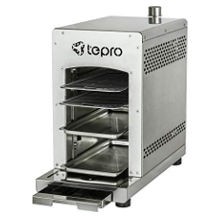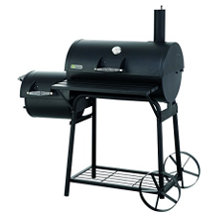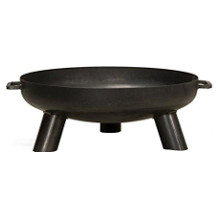2 burner gas grill purchasing advice: how to choose the right product
- The most important facts in brief
- 2-burner gas grills heat up faster than charcoal grills, but offer less grilling surface than versions with three or five burners.
- A gas barbecue should have an output of around ten kilowatts. However, the ideal wattage varies depending on the grilling area, consumption and number of people.
- For two people, the grilling surface should be about 1,000 square centimetres; for a barbecue party, 3,500 square centimetres is recommended.
- Grill grates are made of either stainless steel or cast iron. The former is particularly easy to clean, while the latter retains heat very well.
- Before using the gas barbecue for the first time, it should be baked in. To make cleaning easier, it is advisable to burn it out regularly.
The perfect barbecue result with two burners
The sizzle of a juicy piece of meat on the barbecue is music to many people’s ears. When the savoury, smoky smell spreads through the air and the spicy meat juice escapes from the crispy crust as it is cut, the barbecue experience is perfect.
But a grill master is only as good as his grill: a 2-burner gas grill offers all the prerequisites for perfectly prepared grilled food. If you like to barbecue in small groups, a 2-burner gas barbecue is the perfect alternative to the more expensive and bulky 3- or 5-burner gas barbecues. In contrast to conventional electric or charcoal barbecues, gas barbecues impress with their speed and uncomplicated, smokeless preparation. The propane or butane gas flame generates the desired temperature immediately after lighting and the two burners ensure an even distribution of heat. This makes both direct and indirect grilling possible.
Pro points
Drawbacks
How does a 2-burner gas barbecue work?
2-burner gas grills are operated with gas from a bottle in the base cabinet of the grill. A hose leads the gas from the bottle into the grill chamber. There, the two different burners can be controlled via controls on the front of the grill and the gas outlet regulated. A pressure gauge shows you how high the gas bottle is. You ignite the gas with the help of a match or a generated spark, the so-called piezo ignition. The temperature inside the grill chamber can be adjusted using the outer dials. Any meat juices and liquids are collected on a grease drip tray, also known as a fat drawer. This can then be pulled out and cleaned.
What should I bear in mind when buying a 2-burner gas barbecue?
When buying a 2-burner gas grill, you should pay particular attention to the power and the ability to grill directly or indirectly. The design as well as the grilling surface depend on the average number of people for whom you want to grill. The material of the grill and the grate differ in quality and provide information about how durable the grill is and how the grilling results turn out.
Number of burners
As the name suggests, 2-burner gas grills always have two burners. This is an advantage compared to models with one burner, as the heat distribution on the inside of the grill is uneven with 1-burner grills. With a 2-burner model, the temperature can be precisely controlled and regulated. Grills with three or four burners are more effective, but also a lot more expensive.
Power
The power of a gas barbecue is measured in kilowatts. The higher the kilowatt number, the more gas the grill burns in an hour. In addition, a larger grilling surface requires more power. But the gas barbecue should also be able to produce a sufficient temperature at low consumption. Only a few models have an output of less than one kilowatt. Most have between one and ten kilowatts. From seven kilowatts, the grill is already considered powerful. Some models even have between 15 and 30 kilowatts. These models are usually only needed if you regularly grill for several people on a large grilling surface.
Barbecue area
If you also want to prepare larger grilled food, such as steaks, fish or skewers, an area of 150 to 200 square centimetres per person is recommended. If you want to add side dishes, you should aim for 400 to 500 square centimetres. This results in a suitable grilling area of around 1,000 square centimetres for a two-person household. For a small family of three to four people, 2,000 to 3,000 square centimetres is sufficient. However, barbecuing is usually a community event where guests are invited. For this, your gas barbecue should have a grilling surface of at least 3,500 square centimetres.
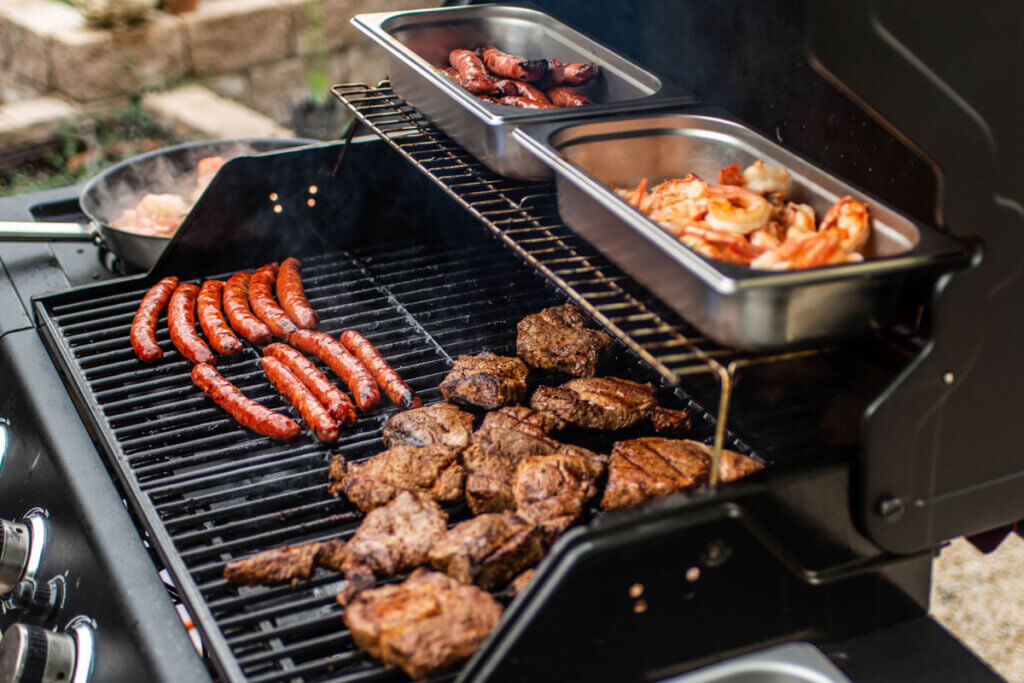
Material
There are three different materials used in the construction of gas barbecues. You can choose between stainless steel and cast iron barbecues and models with an enamelled surface.
| Material | Advantages | Disadvantages |
| Stainless steel | Particularly high quality and easy to clean | Low heat storage capacity |
| Cast iron | Very good heat storage | Comparatively heavy and requires care |
| Enamel (coating) | Protection against rust and easy to clean | Can become cracked if handled incorrectly |
Grill grate
The grill grate is ultimately responsible for the grilling result: no matter how experienced the grill master, a grate of inferior quality or made of unsuitable material will cause the grilling result to fail.
Stainless steel

Stainless steel grates are also recommended because they store heat very well and are easy to clean after use. The heat storage capacity of stainless steel is sufficient to achieve a good grilling result, but the grill marks are of low quality and not very pronounced. If good branding is important to you, you should go for cast iron instead. Stainless steel grates have an attractive design and are processed to a high standard, which is why they are relatively expensive.
Cast iron

Cast iron grates are heavy but have the best heat retention properties. Grilling at low temperatures is difficult because cast iron heats up very quickly. At high temperatures, the grilled food can easily burn. Striking grill marks are easy to make. The grate must not be cleaned with coarse brushes, as this damages the patina and makes the cast iron susceptible to rust. In this case, the grate must be re-baked.
Chrome
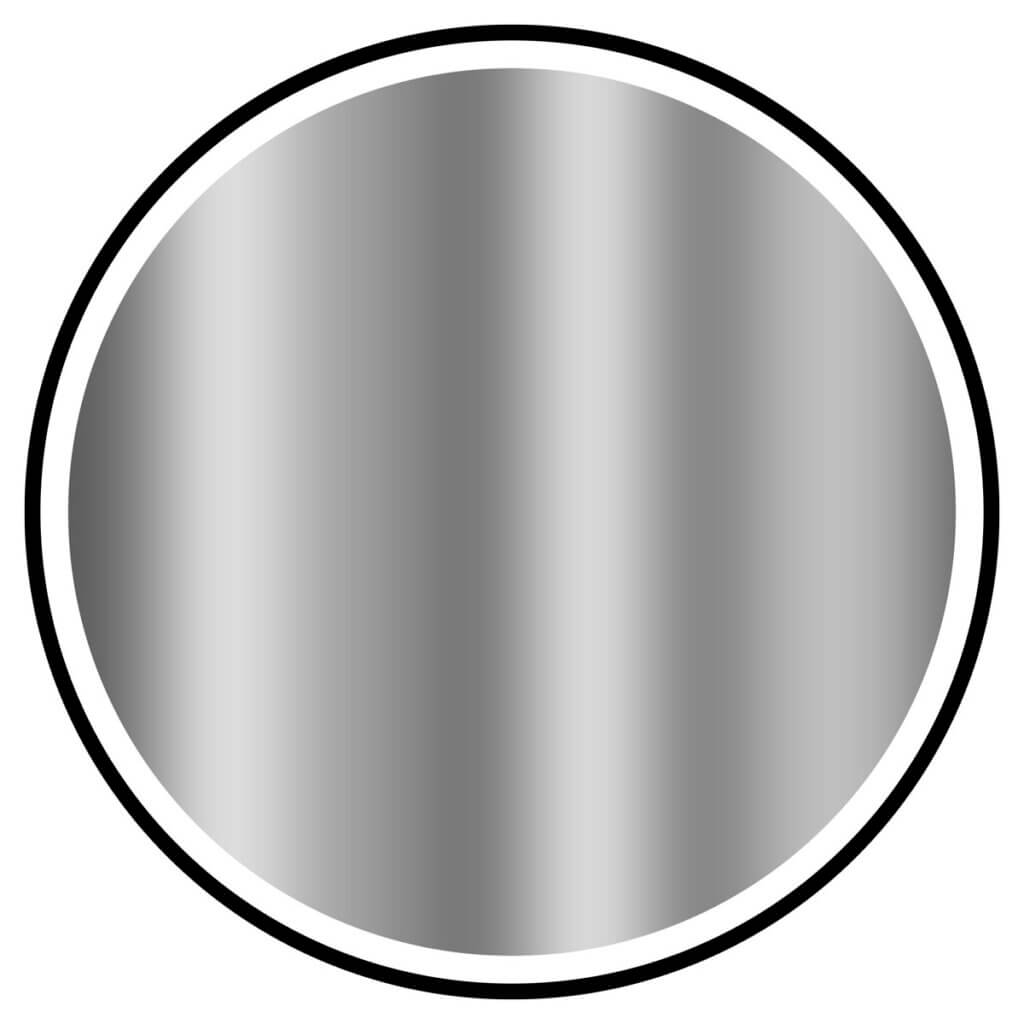
Chrome-plated grates are cheap to produce, they cost less than stainless steel grates. However, if the protective chrome layer is damaged, they quickly rust. As soon as the chrome layer becomes porous, the grate loses its non-stick properties and the food sticks to it or burns more quickly. A chromium-plated grate should always be cleaned and maintained, otherwise it is almost impossible to clean once the layer has been damaged.
The grill grates also differ from each other in terms of shape. You can choose between a bar-shaped, wave-shaped and v-shaped grate. The quality of the grilling result does not depend on the shape, but the branding does. It is up to your preference what the perfect steak looks like to you.
Grill types
With a 2-burner gas grill, you have the option of direct or indirect grilling. Not all models offer both options.
Direct grilling
With direct grilling, both burners are set to full power and the grill is preheated. The food is then placed on the grill and cooked at 200 to 300 degrees Celsius, depending on the recipe. Then close the lid and open it only to turn the food once after four to five minutes. The principle is comparable to searing in a pan and is suitable for meat with short cooking times, such as steaks or chops.
Indirect grilling
For indirect grilling, first preheat the 2-burner gas grill. Then switch off one of the two burners and place the food to be grilled there; it must not come into contact with the open flame. Due to the closed lid and the uneven heat distribution, the air inside starts to circulate. The grilling method is comparable to the convection programme in an oven. The food is cooked gently and does not need to be turned. This is optimal for foods with cooking times of more than 15 minutes, such as roasts.
The “meat pore” myth
There is always talk of closing the pores of meat by searing it. However, it must first be stated that meat does not have pores. Instead, channels run through the skin from which juices can actually escape. But these are not sealed by the hot frying. Rather, it is the proteins that coagulate due to the high temperatures and thus seal the juice channels. The roasted aromas produced during searing are also responsible for a crispy brown steak. So the alleged sealed meat pores that make meat juicy and crispy remain a barbecue legend; and good trivia knowledge at the next barbecue party.
Combining both methods
If your 2-burner gas grill is capable of both direct and indirect grilling, it makes sense to combine the two methods, especially for particularly juicy roasts. First grill the roast until crispy by applying heat directly from the outside and then turn down the temperature. Now the roast can cook for some time at low heat. Brush the surface of the meat occasionally with oil. The combination of the two grilling methods ensures that the meat becomes crispy on the outside and remains juicy on the inside.
Design
The standard 2-burner gas grill is a floor-standing appliance that has a hinged lid, a base cabinet with doors and two shelves on the sides. The base cabinet is so spacious that it can usually accommodate two gas bottles. Some models have practical castors that make it easy to move the barbecue. Brakes ensure that the appliance stays in place. Castors are particularly useful because 2-burner gas barbecues weigh around 30 to 60 kilograms.
If you have a patio kitchen, you can also buy a built-in version of the 2-burner gas barbecue. As a tabletop model, this type of barbecue is particularly small and can also be used in a small space, such as a balcony. Most models offer space for barbecue utensil hooks on which you can hang the relevant utensils.
Extras
Some extras are not included as standard with every 2-burner gas barbecue. It makes sense for every professional and amateur barbecue master to purchase them, as the accessories make work easier and are sometimes even essential for this activity:
- Window in the lid
- Flame guard and grease deflector
- Barbecue tongs and gloves
- Water-repellent and UV-resistant cover bonnet
- Digital or analogue thermometer
On the way to becoming a barbecue master
If you have decided on a 2-burner gas barbecue and want to use it for the first time at your next barbecue party, you should be aware of a few points. For example, it is important to burn in a gas barbecue and connecting the gas bottles requires a bit of dexterity. Cleaning the appliance must also be well thought out.
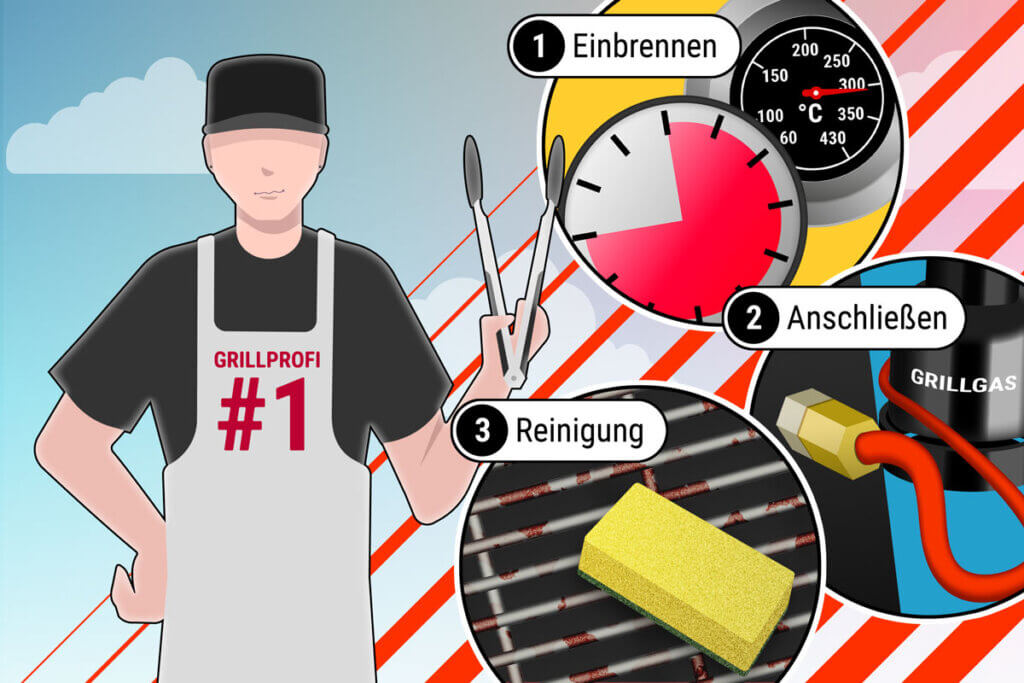
How do I burn in a 2-burner gas barbecue?
Before using a gas barbecue for the first time, it is important to burn it in to remove any production residue that may be present. This gives all surfaces in the grill a natural patina that protects the material from rusting and provides non-stick properties. You can use heat-resistant oils for the baking. Rapeseed oil is very suitable for this, as it has a high smoke point and no strong flavour of its own. The temperature must be at least 300 degrees Celsius during the baking process so that all residues dissolve. With most gas grills, it takes about 20 minutes to reach this temperature. Now let the grill burn in for another 20 minutes. All in all, you should allow 40 to 45 minutes for the process. You can then use the grill normally.
A similar procedure that you should carry out regularly is free-burning. This is done after grilling, when the remains of the grilled food are still loosely lying on the grate. A high temperature dissolves all residues and turns them into ash, which you can then remove by hand. The process is similar to pyrolysis cleaning of an oven: it improves the cleanliness of the grill and prevents too much fat from accumulating in it. Also increase the temperature of your 2-burner gas grill to around 300 degrees Celsius for ten minutes. Carry out this procedure immediately after grilling.
What do I have to pay attention to when connecting the gas bottles to the gas barbecue?
The gas barbecue must be properly connected to the gas bottle. Take enough time for this and proceed conscientiously. Also be careful when disconnecting the old gas bottles, as even small residual amounts can ignite. First check all lines and connections; stop the project if there is the slightest damage. Close all valves and remove the protective cap from the bottle. Now you can connect the bottle to the pressure regulator. A pressure reducer will equalise the pressure between the barbecue and the gas bottle. When the bottle is connected, you can place it in the desired location. Then check all the lines again and look for any damage before opening the valve. A leak detection spray or optionally a water and washing-up liquid mixture can be very handy to spot leaks.
Store the gas cylinder in a sheltered and well-ventilated place where it is not exposed to direct sunlight. The base cabinet of a 2-burner gas barbecue is ideally suited for this. For safety reasons, the oxygen supply is usually sealed at the factory and cannot be changed manually. To avoid further risks, you should always take the following safety measures to heart:
- Do not use great force or violence.
- Switch off all gas burners and operate the stopcock.
- Never smoke near the gas barbecue.
- Turn off the gas burner and the valve when you have finished grilling.
- Make sure that the bottle has a secure stand.
- Only connect the bottle when the lid is open.
- Replace the hoses and connections every five years.
How do I clean a 2-burner gas barbecue?
Before you clean your gas barbecue, you should free excess grease and grill food residues so that they are easier to remove. Clean the grate, drip tray and rack with clean water; some grates and grease drawers are even dishwasher safe. You can remove the residue with a steel brush. Special grill cleaners are handy to loosen stubborn dirt. As a home remedy, coffee grounds are recommended to remove encrustations. If you don’t have room to let the grate soak, you can also wrap it with dampened newspaper. To make cleaning easier, it is a good idea to rub the grate with grease before using it. This way, grill residues do not stick to the grate as easily. If you grill a lot, you should clean the appliance completely at least once a month.
The following steps are recommended for a complete cleaning:
- Lock the gas bottle.
- Loosen all screws and clean them with steel wool.
- Clean the burners.
- Heat the grill after cleaning to remove detergent odours.

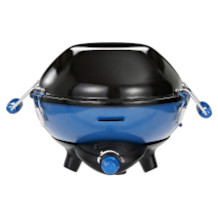
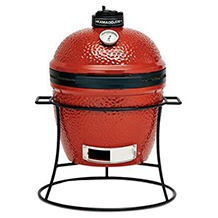
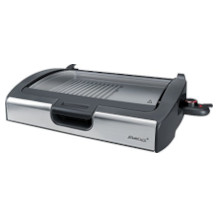
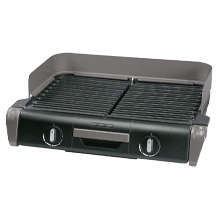
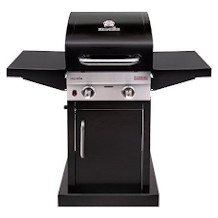
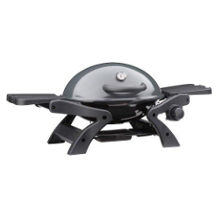
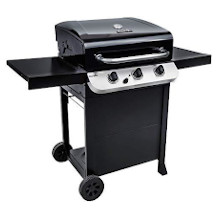
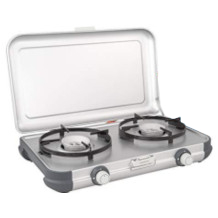
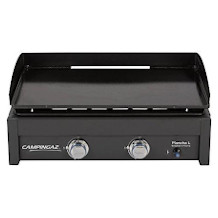
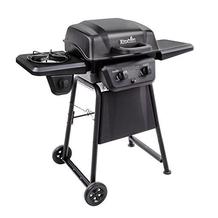
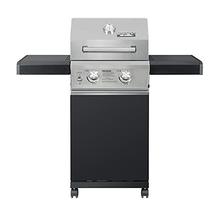

 587 reviews
587 reviews
